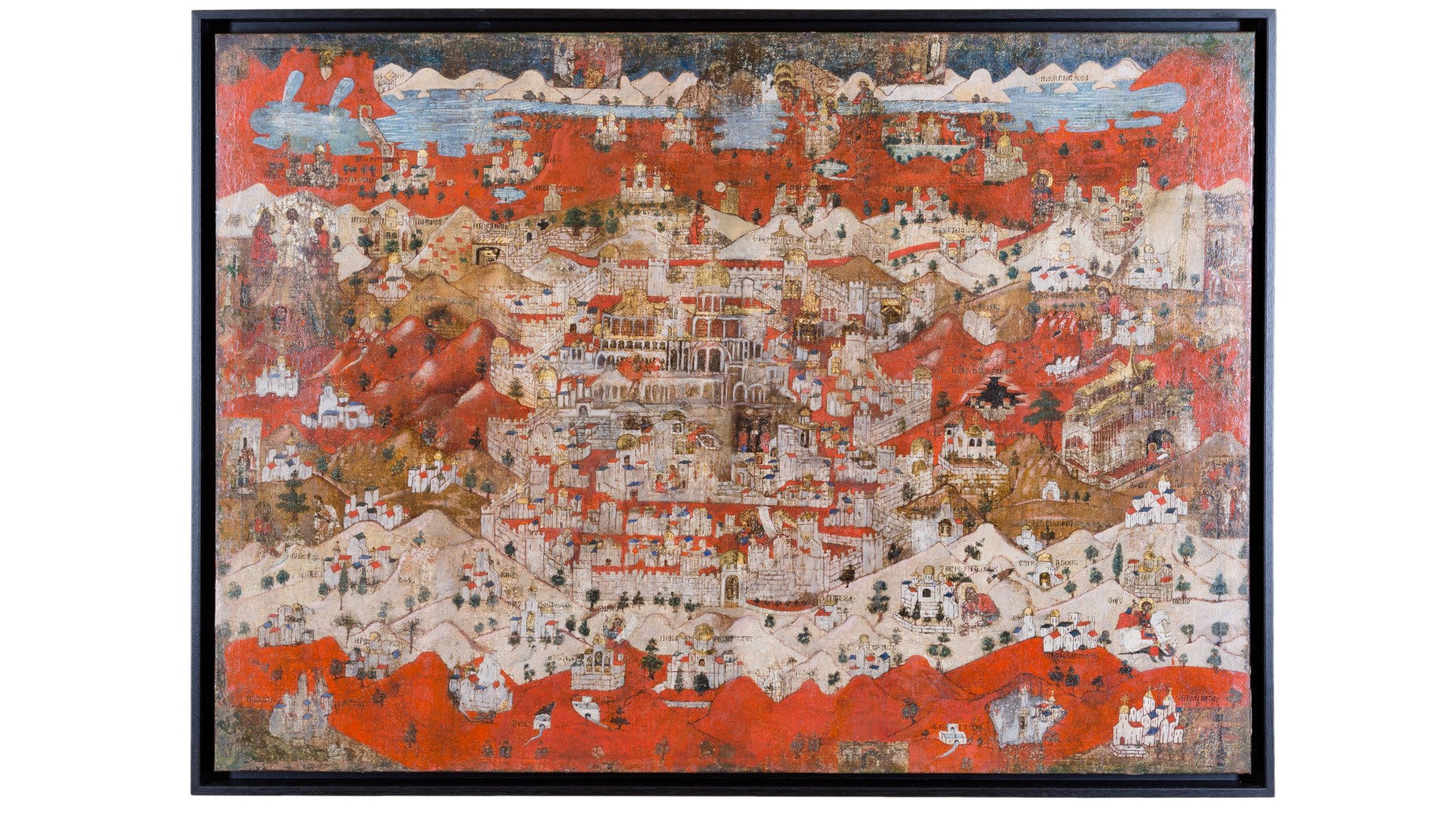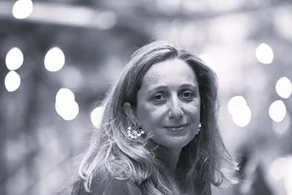Dar el-Nimer showcases sixty rare icons from Rami Nimer’s collection, offering a deep look into Levantine Christian art and history until January 2026.
“On Earth as it is in Heaven”: Icons from Jerusalem
“On Earth as it is in Heaven”: Icons from Jerusalem

.webp)
This is the title of an exhibition currently taking place at Dar el-Nimer for Arts and Culture, located in the Clemenceau district of Hamra. This long-awaited event brings together around sixty icons and was originally scheduled for 2019 but was postponed due to Lebanon’s crisis and the COVID-19 pandemic.
All the pieces on display come from a single source: the private collection of Rami Nimer, who also owns the venue.
Born in Nablus, Rami Nimer has amassed an impressive collection of artworks. In 1967, when Israel occupied Nablus—a city in the West Bank that was then under Jordanian control—it marked a turning point for Nimer, one that would deeply influence the way he collected art in the years to come.
I started my collection when I was 13, buying postcards. It was small and affordable
As a child growing up in a feudal Palestinian family, Nimer was steeped in history and tradition, beginning with his ancestral home in Nablus—a 17th-century palace dating back to 1610.
Over time, he became increasingly fascinated by the Ottoman era. His collection focuses mainly on Arab and Islamic art, such as miniatures and calligraphy.
In 1979, while living in New York, Nimer met Iranian antique dealers who had fled their country after the fall of the Shah Mohammad Reza Pahlavi. Through the objects they had brought with them, his collection expanded further.
He acquired his first icon 25 years ago from an antique dealer. It was then that he discovered something remarkable: in 19th-century Jerusalem, Russian pilgrims commissioned icons as souvenirs of their pilgrimage to the Holy Land. He now owns five such monumental icons, all of which are currently on display at Dar El-Nimer.
“These icons are known as Proskyneteria, from the Greek word meaning ‘souvenir,’” explains Mahmoud Zibawi, one of the most important experts in Levantine icons.
They were painted on canvas, unlike traditional icons which are painted on wood. Once back home, pilgrims would mount them on a wooden frame and hang them up
“No two icons of this kind are ever identical,” Zibawi continues. “They may look similar, but each one has unique characteristics. At the center of every icon is the Church of the Holy Sepulcher, with the rest of the imagery built around this sacred site. Rather than following a liturgical calendar, the layout follows a topographical order.”

These large icons often depict scenes from the Bible and the Gospels that took place in Jerusalem, along with images of the city monasteries.
In addition to these monumental pilgrim icons, the exhibition also includes Eastern icons representing Christ, the Virgin Mary, the apostles and disciples, and especially highly venerated saints in the Middle East, such as Saint Sabas, Saint Elian of Homs, the prophet Elijah, and Saint Simeon the Stylite.
“The first people to show interest in Middle Eastern icons were the curators of the Sursock Museum,” notes Zibawi. “They organized an exhibition on Melkite icons back in 1969.”
“Today, Western institutions have taken notice,” adds Nimer.
There have been exhibitions in Paris and Berlin about Eastern Christians, and the Louvre is planning a new department dedicated to Eastern icons
The icons are set to be part of the Louvre’s upcoming department of Byzantine and Eastern Christian Arts, scheduled to open in 2027.
“Some of the icons displayed in Rami Nimer’s collection originated in churches and were once part of an iconostasis, while others were intended for personal devotion. We can often trace their origins,” says Zibawi. “Some were painted in the Jerusalem school, and the artists signed their work with phrases like ‘painted by the unworthy hand of so-and-so,’ or ‘painted by the poor worshiper so-and-so.’
Often the artist’s name and city appear together, such as Hanna el-Qudsi (from Jerusalem), a pivotal figure in preserving Jerusalem’s icon-painting tradition. This practice is common across the region, with other examples including Hanania al-Halabi (from Aleppo) and Nasr al-Homsi (from Homs).”
The exhibition, that will run until January 2026, will also feature a series of lectures and periodic guided tours.
Another exhibition is also being prepared, focusing on Christian art from Jerusalem, particularly the mother-of-pearl carving tradition, a craft once mastered by two Armenian artisans from Ottoman-era Jerusalem.
This, too, is part of Rami Nimer’s collection. For him, his native Palestine holds a special place in his heart. He also collects ancient coins minted in Palestinian cities since the Hellenistic era. “It’s a bit of a political act,” he explains, “to show all those who want to distort history that Palestine did, in fact, exist, since ancient times.”
Another upcoming project involves a series of conferences on General Charles-Marie Napoléon de Beaufort d’Hautpoul, a French emissary during the 1860 massacres in the Levant. Nimer acquired his personal diary. “This document sheds light on how the idea of modern Lebanon began to take shape,” he says.


